ON QUARKS, NUCLEI
and
BORON-10
NEUTRON CAPTURE
For
Tritium: Isotope and Nucleotope _click_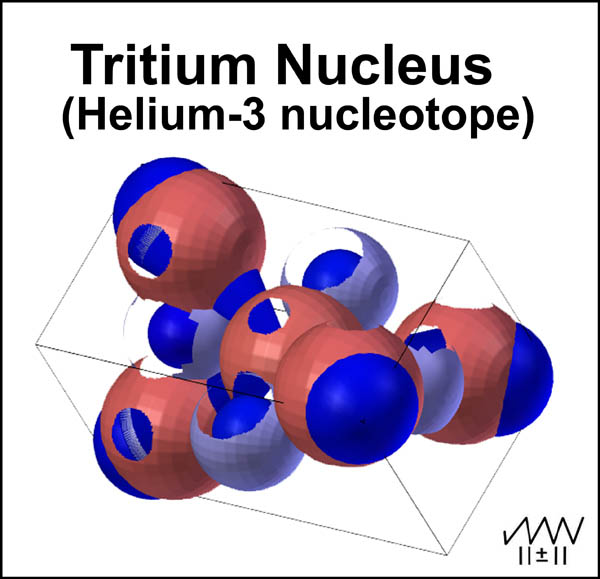
By Joel M Williams (text and images © 2013)
ON QUARKS, NUCLEI
and
BORON-10
NEUTRON CAPTURE
For
Tritium: Isotope and Nucleotope _click_
By Joel M Williams (text and images © 2013)

|
This article and others are included in the 18 chapters of a 164 page paperback compilation of articles by JMW $19.95
US list at Amazon
|
ABSTRACT
The quark make-up of protons and neutrons is discussed. Neutrons that
give protons and electrons must be composed of “Combo Up or Down” quarks.
The neutral baryons of stable nuclei do not contain “Combo quarks”. An alpha
particle containing a “Combo quark” is not the same as an electron-stripped
He-4 atom which contains none. Since the mass of Up and Down quarks constitute
less than 1% of the total mass of baryons, the remainder mass of these must be
non-particulate mass, herein called “fat”. Dumbbell models of the stable
positive and neutral baryons are presented. Using these baryonic dumbbells, the
extraordinary ability of the Boron-10 nucleus to capture neutrons is modeled.
combination quarks, nuclear mass, quark mass, alpha particle
INTRODUCTION
n
= p+ + e- + energy
(1)
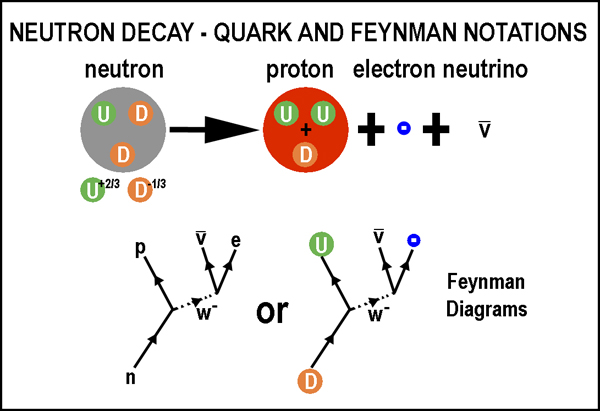
Figure 1. Current quark and Feynman notations for the decay of a neutron.
The imagery in still accepted after nearly half a century. So, what could be wrong?
Recent studies at Jefferson Lab
indicate that two Up and Down quarks pair up in protons and neutrons and leave
the 3rd dangling[12].
They indicate that paired quarks can have different behavior than the single.
Diquarks have not been confirmed nor dismissed, yet, so the nature of the
quarking of the baryons is still a bit unsettled. This paper will focus on the
current Standard Model view and the application of the triad quarks to some
nuclei and to neutron capture.
DISCUSSION
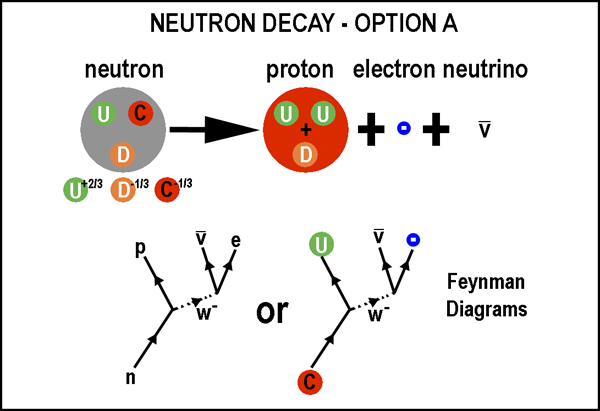
Figure 2. Neutron Decay Option A: Conversion of a combo component to an Up quark.
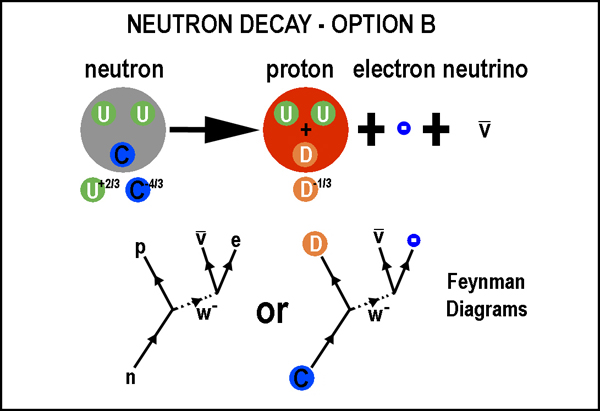
Figure 3. Neutron Decay Option B: Conversion of a combo component to a Down quark.
RAMIFICATIONS FOR THE NUCLEI OF THE ELEMENTS
Assuming that Up and Down quarks4 are the only “particle” constituents of a proton, it seems logical that they must surrounded by “fat” within the nuclear confinement. This can be represented by the following equation:
And, if quarks can be fat and lean, then it is reasonable to assume that leptons
can also be. Thus, neutron decay becomes
or
with
“Fat” must be non-particulate, non-descript “mass”. How much “fat”? For a proton, the “fat” is 106 times the mass of the quark sum (0.938% of the total and experimentally observed[13]!). Since a neutron’s mass is 0.001388 greater than that of a proton, this is Wfat. Thus, the “fat” around the electron adds 0.00084 or 53.1% to the mass of the electron when in the nucleus, assuming there is little fat around the neutrino. How that “fat’ is manifested is another matter.
The emphasis of high-energy research has been to delve deeper and deeper into the nucleus. Modeling has thus been on the simplest: proton and neutron and smaller. Most of the naturally occurring elements of the periodic table have very long lifetimes. Other than hydrogen, these elements have more mass than can be attributed to the protons alone. The extra mass is thus attributed to neutrons which add no charge. Considering the lifetime of a neutron, some other explanation is needed. Indeed, a “nuclear sphere” of proton and neutron balls seems rather far fetched anyway. Considering that a proton is quite stable with Up and Down quarks, it would seem that other stable nuclei are simply coordinated arrangements of these two stable quarks and their “fat” without the Combo with electrons. Extra “fat” is needed as the nuclear “body” grows. As an example, consider the nuclei of deuterium, tritium, helium, and mercury.
whereas
unstable
(4Ulean + Cup
lean + 4Dlean + “fat”)tritium
nucleus →(5U + 4D +
“fat” )He-3 nucleus
+ 1e
(6)
or
(5Ulean + 3Dlean
+ Cdown lean + “fat”)tritium nucleus→(5U
+ 4D + “fat” )He-3 nucleus
+ 1e
(7)
stable
(6Ulean + 6Dlean
+ “fat”)He-4
nucleus
(8)
stable
(280Ulean + 320Dlean
+ “fat”)Hg-80 nucleus for mass 200 (80p+120”stable
n”)
(9)
Consider that, if quarks are
actually grouped in triads, the positive triads (protons) and neutral triads
(“stable neutrons”) would likely be dumbbell-shaped as depicted in Figure 4.
Can you imagine crystal–like networks – with and without flaws? Can you
imagine how 80 UDU and 120 DUD dumbbells could be logically assembled for the
Hg-200 nucleus? How about simple, minimal energy, arrangements of 600,
individual, stable quarks? Since radioactive tritium has a half-life of 12.3
years[14]
(441,000 x that of an “unstable neutron”), combo quarks can form pseudo
stable nuclei. Can a non-radioactive H-3 (tritium) exist in analogy to He-3?
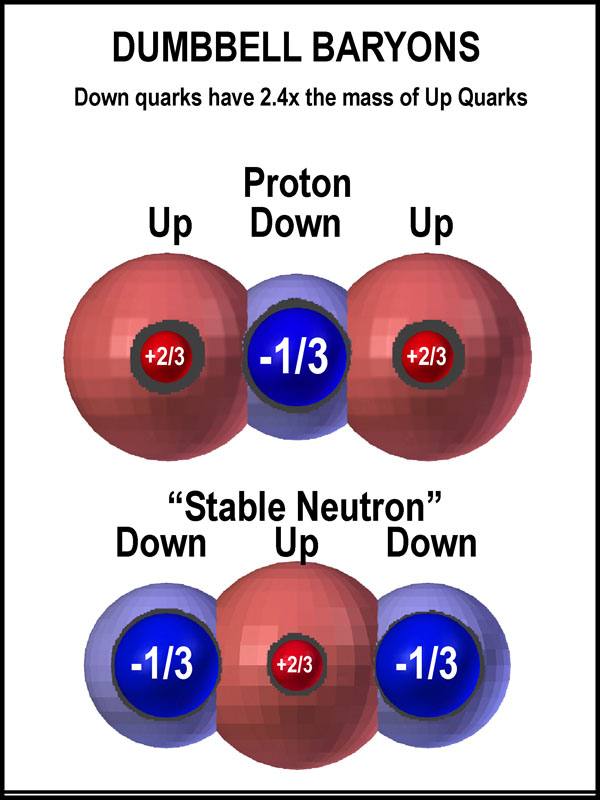
Figure 4: Dumbbell shapes for positive and neutral baryons.
NEUTRON
CAPTURE
An interesting behavior of some nuclei is their ability to capture neutrons. In this realm, few nuclei rival that of Boron-10 and the only naturally occurring ones better at it are rare earth elements and Cadmium[15]. This light mass element has a neutron cross-section 1000 to 100,000 times bigger than a “barn” (a barn is the size of a Uranium nucleus[16]) when capturing low energy neutrons[17].
Boron-105+
+ n →
Li-73+ + Alpha Particle2+
(10)
The natural occurrence of Boron-10 and the facileness of this reaction allow it to be considered in low energy neutron cancer therapy[18].
The reaction seems simple enough, but what is the reason for Boron-10’s unusual ability to capture neutrons? A low-energy transition pathway involving a loose and easily deformed nuclear mass would provide an excellent answer. The modeling in Figure 5 of the interaction of a possible Boron-10 nucleus with a neutron is based on the foregoing discussion of dumbbell baryons forming nuclei. With arrows to indicate baryon movement, it should be easy to follow the capture and conversion to observed products. Refer to Figure 4 for the shapes of the positive (proton) and negative (neutron) baryons, if necessary. The effectiveness of a softer punch (lower energy) by the approaching neutron should be clear. If the neutron is of the “combo” variety, the alpha particle will not be the same as He-4 stripped of its electrons. If it is of the “stable” Down variety, it will be.
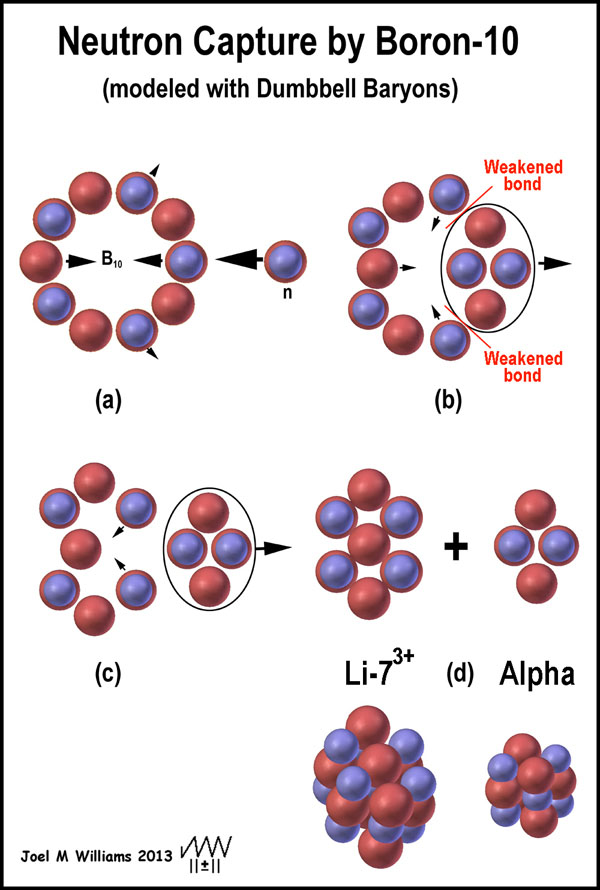
Figure 5. An explanation of the ease of neutron capture by a Boron-10 nucleus
SUMMARY
Neutrons that give protons and electrons must contain a “Combo Up or Down” quark. Neutral baryons of stable nuclei contain stable Up and Down quarks and no “Combo quarks”. An alpha particle containing a “Combo quark” is not the same as an electron-striped He-4 atom. Up and Down quarks constitute less than 1% of the total mass of baryons; the remainder mass of these must be non-descript, non-particle mass, herein called “fat”. The triads of individual positive and neutral baryons form complementary barbell units with distribution of mass and electrostatic charge that facilitate nesting. The interaction of these dumbbells provides a mechanism for easy capture of neutrons by the Boron-10 nucleus.
REFERENCES
[1]
J. Chadwick, Possible Existence of a
Neutron, Nature 192, 312 (1932)
[2]
(a) "Detection of the Free Neutrino: A Confirmation", C. L. Cowan,
Jr., F. Reines, F. B. Harrison, H. W. Kruse and A. D. McGuire, Science 124,
103 (1956); (b) "The Neutrino", Frederick Reines and Clyde L.
Cowan, Jr., Nature 178, 446 (1956).
[3]
(a) M. Gell-Mann, Phys. L&t. 8, 214 (1964); (b) G. Zweig, “An SU3
Model for Strong Interaction Symmetry and Its Breaking,” CERN Report No.
TH 412 (
[4] Up and Down quarks have been detected; others are suspect. Breidenbach M. et al. (1969) Observed Behavior of Highly Inelastic Electron-Proton Scattering, Phys. Rev. Let., Vol. 23, No. 16, 935-939.
[5] See Modern View (Standard Model) timeline: 1964 – present, http://pdg.web.cern.ch/pdg/cpep/history/smt.html
[6] Protons and neutrons have recently been addressed with the 3-spaces model: The Mechanics of Neutron and Proton Creation in the 3-Spaces Model, André Michaud, http://www.ijerd.com/paper/vol7-issue9/E0709029053.pdf
[7] Fred E. Wietfeldt and Geoffrey L. Greene, The neutron lifetime, Rev. Mod. Phys. 83, 1173–1192 (2011); http://rmp.aps.org/abstract/RMP/v83/i4/p1173_1
[8] http://www-sk.icrr.u-tokyo.ac.jp/whatsnew/new-20091125-e.html
[9] How Old is the Universe? http://map.gsfc.nasa.gov/universe/uni_age.html
[10]
J.M. Williams, The Binary Mole,
http://arxiv.org/html/physics/9904016v1; http://pages.swcp.com/~jmw-mcw/binary_mole.htm
[11] http://nssdc.gsfc.nasa.gov/planetary/factsheet/earthfact.html
[12] (a) JLab 2013 News, Quarks Pair Up in Protons and Neutrons, https://www.jlab.org/news/stories/quarks-pair-protons-and-neutrons; (b) G. D. Cates, C. W. de Jager, S. Riordan, and B. Wojtsekhowsk, Flavor Decomposition of the Elastic Nucleon Electromagnetic Form Factors, Phys. Rev. Lett. 106, 252003 (2011), http://prl.aps.org/abstract/PRL/v106/i25/e252003
[13]
(a) http://physics.info/standard/; (b) Adrian
Cho, Mass of the Common Quark Finally Nailed Down, http://news.sciencemag.org/sciencenow/2010/04/mass-of-the-common-quark-finally.html
[14] http://www.epa.gov/radiation/radionuclides/tritium.html
[15] http://environmentalchemistry.com/yogi/periodic/crosssection.html
[16]
http://en.wikipedia.org/wiki/Barn_(unit)
[17] See plot at http://en.wikipedia.org/wiki/Boron
[18]
(a) Neutron capture therapy of cancer, http://en.wikipedia.org/wiki/Neutron_capture_therapy_of_cancer#cite_note-Barth2012-45;
(b) Barth, RF. Boron neutron capture therapy at the crossroads: challenges
and opportunities. Applied Radiation and Isotopes 2009; 67:S3-S6; (c) The
Basics of Boron Neutron Capture Therapy, http://web.mit.edu/nrl/www/bnct/info/description/description.html